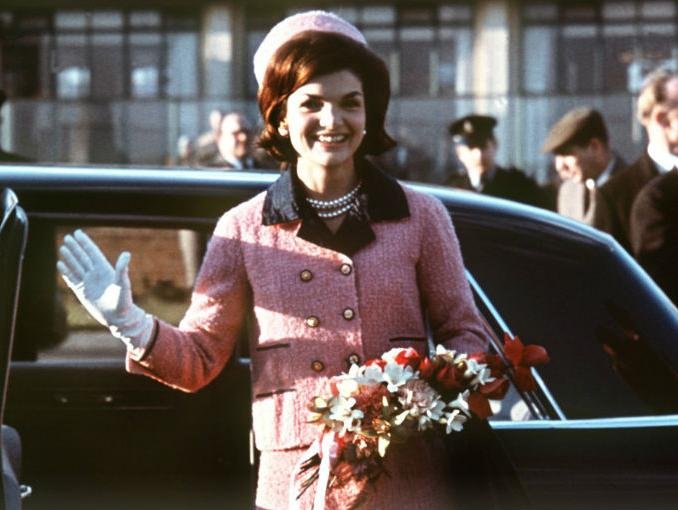FASHION: Art in Motion- History, Preservation and Why Garments Are More Than Just What We Wear
Is fashion art?
Why is textile preservation so important?
Who cares about old fabric anyways?
They’re just clothes!
These are questions that arose after the latest Met Gala parade of fashion. When rumors arose about Kim Kardashian possibly wearing the ORIGINAL Marilyn Monroe “Happy Birthday” Gown that she wore for President JFK’s birthday celebration, many fashion/ textile historians and conservators collectively gasped.
Skip to the night of the event and Kim K. emerged for a few minutes wearing the original gown partially covered in a white fur coat as to hide the open back which could not close. Videos surfaced of the workers at Ripley’s Believe It or Not! handling the garment in an abrupt and rough manner to which those who know historical garments knew damage was already being done.
Image courtesy of Getty Images
Without completely going over the entire debacle (there are amazing articles out there that go further in depth) it really brought to light the importance of not only garment preservation, but appreciation as well.
Why is this so important?
Textiles tell us SO MUCH about the time period they were made in and about the person(s) who owned them. What this PR stunt brought to light was how important preserving relics of history is for future generations to enjoy and what can happen if in inexperienced hands.
Before I started selling vintage I was a collector, as is the story with a lot of us. I remember treating my vintage goods whether garments or luggage with reverence. I used to have the belief they were all haunted by the original owners and it was now my responsibility to keep them safe.
Photography by Shannon Rae
In the world of vintage selling, you will find two camps: those that sell vintage and those who re-home vintage.
Those that sell are more in-tune with the retail, business aspect of vintage. Buying pieces to make a bigger profit and making vintage commerce a heavy hitter.
Those that re-home are people like myself who take the retail side and combine it with finding the proper places for vintage. Our goal is to make sure the vintage we are trusted with goes to those who will take care of them and keep them going for the decades to come. When I acquire vintage pieces I will almost always have a person in mind that it should belong to. Nothing beats the feeling of providing a vintage garment to someone who lights up at the sight of it!
Since I opened my brick & mortar, in a larger space, February 2020 I haven’t been able to frequent as many vintage shops as I would like to as just a customer. Last week I had the opportunity to visit one of my amazing neighbors in vintage, Pam of Violet Vintage, here in Downtown Fargo. One of the many things I love about Pam is that she is also a collector and always has the garment’s best interest in mind. I had heard from a wonderful regular customer of ours that she just received a treasure trove of 1920’s pieces including a 1920’s beaded, flapper dress.
Anyone who lives and breathes vintage fashion would immediate feel the hairs on the back of their necks stand up! I immediately emailed Pam and asked if I could come in and look at the pieces before they were sold or put into a collection. She graciously allowed me to take a look and take some photos albeit not the best quality photos :)
This came from an estate in Rural North Dakota.
I will be the first to admit that the 1920’s and 1930’s are not my particular areas of expertise, but I can still appreciate not only the amazing attention to details, but the INCREDIBLE condition of this garment! From what Pam was told this was stored in a chest and left to time. Just look at that Cyan Blue color!
Garments like these have such historical significance for a multitude of reasons! Here we see the start of a huge shift in women’s fashion with the rise of tubular shapes which hid the “typical” feminine shape. When we think of vintage or antique garments we often think of how structured and tailored they typically were, but with the movement to ditch the corsets this silhouette gave women the freedom play with shape!
Fashion has always been fluid and will continue to be, but remembering pieces such as this reminds us of the important shifts in attitude when it comes to expression through dress. The “Flapper Dress” known for the drop waist, shapeless cut and shorter hem allowed women a better range of motion for activities such as driving and dancing (amongst other things).
I was also able to see some earlier pieces from the turn of the century!
Left: A turn of the century, embroidered lace, bed jacket Right: Turn of the century silk bodice
Again I admit I am not the most knowledgeable about pre-1940 garment construction I have been more interested in the earlier bodice pieces from the turn of the century and earlier. The silk bodice above is similar to a pink bodice I bought over a decade ago from a dealer in New York who specialized in earlier antique garments. I will be doing a separate post on this particular piece, but until then I just have to emphasize the complexity of these garments!
Pieces similar, in caliber, to the piece on the right are considered “couture” garments because they were custom made, for the original owner, by experts in their industry. Using the best materials and techniques. Because silk is a natural fiber this can cause some issues in conservation and preservation. Instead of me explaining in my limited capacity here’s an explanation about the breakdown of silk by a wonderful blog and resource The Pragmatic Costumer:
During the 19th and early 20th centuries, silks were often treated with metallic salts to give them fabulous weight and a pearly sheen. Most fabric is sold by the yard, but historically, silk has been sold by weight. Adding metallic salts, usually tin-, iron, tin, or lead bearing ones, made silk not only more luxurious looking, but more luxuriously priced because of the increased weight.
Continued
The culprit behind silk shattering is the tiny crystalline salts bonded to the fibers. As the threads weaken through age, dryness, and stress, the sharp salts act like minute razors that slice apart the delicate threads.
You may be asking yourself, “ That’s all interesting and well, but what does this have to do with Marilyn Monroe’s dress?”.
Monroe’s dress was made of what’s called marquisette fabric, which is a mesh fabric that can be made out of almost any fabric, but most commonly silk, cotton and rayon. While I couldn’t find a definitive answer to the make of the specific marquisette fabric used in Monroe’s dress, due to the shine, decade and condition of the fabric as it has aged, I believe it to be a silk and rayon blend. Please correct me if I’m wrong!
When photos began to surface of the condition of Monroe’s dress post-met gala, it became clear irreparable damage had been done. Not only were original rhinestones missing, but the fabric itself started to shatter, tear and degrade. While is it possible to repair mesh, it’s unclear if such repairs can even be possible.
Many have asked, “Who cares? It’s just a dress!”
To those who don’t know or care about history, sure it is just a dress.
To those who understand how garments factor into history and cultural events it’s so much more than an object.
Yes, this dress was known at THE DRESS Monroe wore to JFK’s birthday during the height of their alleged “affair” scandal.
Yes, she died mere months after this performance.
Yes, JFK was assassinated within the year after that performance.
One historically relevant side of it, especially today, was that this garment was a statement. We will never truly know the truth behind Marilyn Monroe as a person because she was a HUMAN who was complex just as all of us are. What we do know is that she was more than just a beautiful blonde with an amazing shape. She was a savvy business person, creative, comedienne, actress and a person who owned who she was. This dress represented the ownership she had of her body, her story and her power. It wasn’t just a nude illusion dress, but a moment in history where a woman yielded her power in an arena of men who wanted her to be seen and not heard.
When we get dressed in the morning, we dress for something. Whether it’s to go to the gym, to work, a gala, etc. We dress with intent and there is always some kind of message behind what we wear even if it’s subconscious. What you are wearing today could be a symbol of history. A symbol that will be seen in 100 years that represents a moment in time. Remember the Pink Pussy Hats? Jackie Kennedy’s Pink Set and Pillbox Hat? If you’re reading this blog then I have a feeling each of those garments sparked an image in your mind about why they’re historically relevant even though they're decades apart.
What we wear is important. Not just for style, but for history and context. Makes you think a little bit more about what you’re going to wear tomorrow, doesn’t it?







